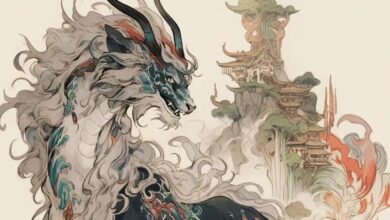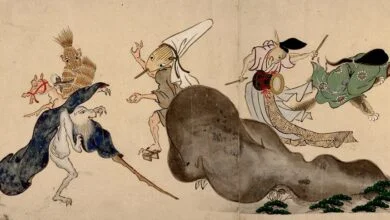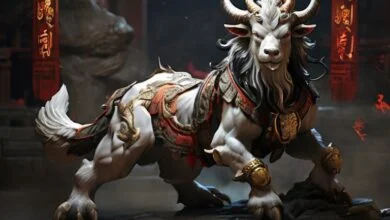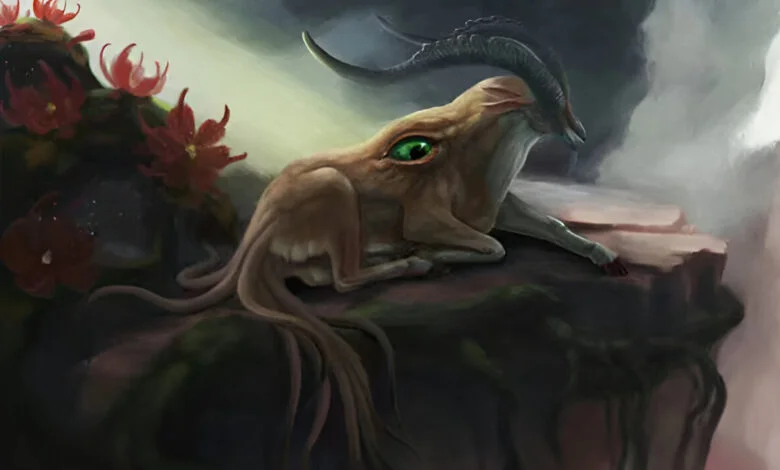
Once upon a time, if you traveled three hundred miles east from Mount Di, you would arrive at Mount Ji. Deep within this mountain lived a strange creature known as the Boyi. At first glance, the Boyi resembled a sheep, but upon closer inspection, its uniqueness became clear: it had nine tails, four ears, and two eyes oddly positioned on its back.
SHANGHAIJING
Despite its gentle and sheep-like appearance, the Boyi possessed a magical quality. It was said that anyone who wore its fur would be imbued with immense courage, allowing them to traverse the world without fear. The contrast between the Boyi’s mild form and the bravery it bestowed was striking, making this creature seem both divine and peculiar.
The Boyi’s gentle appearance was a stark contrast to the fierce power its fur conferred. This combination of gentleness and bravery made the Boyi a creature of legend, revered and admired for its mystical attributes. Those who encountered the Boyi were left in awe of its serene yet powerful presence, a true marvel of the natural world.
In the «Classic of Mountains and Seas: Book of Southern Mountains,» the Boyi is among the most extraordinary mythical creatures. Although its appearance is extremely gentle, it is actually fierce and incredibly brave. The Boyi is depicted with four ears and majestic horns growing from its head, adding to its imposing presence.
Even more impressive is its nine tails. The number nine holds great significance in Chinese culture, symbolizing the ultimate. Ancient Chinese revered the number ten and esteemed nine, considering ten as a comprehensive number and nine as the pinnacle of yang numbers. As mentioned in «Chu Ci: Jiu Bian,» «Nine is the number of yang and the principle of the Way,» and in «Guanzi: Five Elements,» there is the saying «The Heavenly Way is governed by nine.» Even the emperor was referred to as «the supreme nine-five,» reflecting the high regard for the number nine in Chinese culture.
The Boyi’s possession of nine tails signifies its esteemed status among the mythical creatures in the «Classic of Mountains and Seas.» Throughout the entire work, only a few nine-tailed beasts are mentioned, such as the well-known Nine-Tailed Fox and Lu Wu. This emphasizes the unique and revered nature of the Boyi in ancient Chinese mythology.
The «Classic of Mountains and Seas,» also known as «Shan Hai Jing,» is a Chinese classic text that is part geography and part mythology. It is a compilation of mythic geography and legends, and is often considered one of the most important works in Chinese mythology. The Boyi, with its unique combination of gentle appearance and formidable power, is a testament to the rich imagination and symbolic depth of this ancient text.
In addition to its symbolic importance, the Boyi’s portrayal may also reflect ancient Chinese values and beliefs about the natural world and the divine. The creature’s nine tails, for example, not only denote its ultimate status but also reflect the broader cultural significance of the number nine as an embodiment of completeness and supreme power.
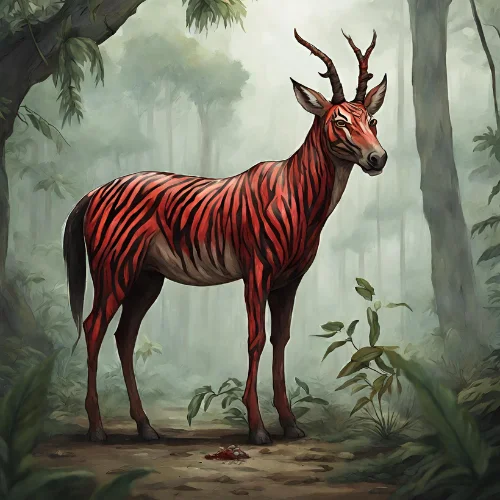
Learn more about these fascinating creatures! LuShu
